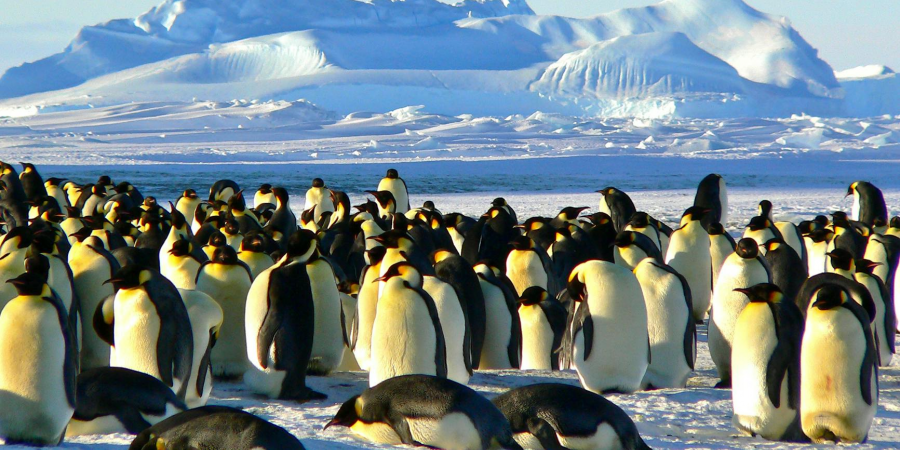

Penguins are fascinating aquatic birds that are renowned for their unique adaptations to life in some of the harshest environments on Earth. Belonging to the family Spheniscidae, they are flightless birds found primarily in the Southern Hemisphere, although some species inhabit temperate regions closer to the equator. Penguins are highly adapted to life in the water and are renowned for their streamlined bodies, flipper-like wings, and remarkable diving abilities.
One of the most iconic features of penguins is their distinctive black and white plumage, which serves several purposes. The black dorsal side helps camouflage them from predators when viewed from above, while the white ventral side blends with the sunlight filtering through the ocean, making them less visible to predators from below. This coloration also plays a role in thermoregulation, helping penguins maintain their body temperature in cold environments.
Penguins have evolved a variety of adaptations for life in the water. Their wings, which have evolved into flippers, are perfectly suited for efficient propulsion through the water, allowing them to reach impressive speeds while hunting for prey. Their bodies are streamlined and torpedo-shaped, reducing drag as they swim. Additionally, penguins possess dense bones, which help them maintain neutral buoyancy while diving to great depths.
Despite their flightlessness, penguins are incredibly agile and efficient swimmers. They use their flippers to steer and maneuver through the water with remarkable precision, allowing them to chase down prey and evade predators. Some species of penguins are capable of diving to depths of over 500 meters (1,640 feet) and can hold their breath for several minutes while hunting underwater.
Penguins are primarily carnivorous and feed on a variety of marine organisms, including fish, squid, and krill. Their diet varies depending on the species and the availability of prey in their habitat. Penguins are skilled hunters, using their keen eyesight to locate prey and their streamlined bodies to pursue it underwater. They often hunt in groups, known as "rafts" or "flocks," which can consist of hundreds or even thousands of individuals.
Reproduction in penguins is a fascinating process that varies among species. Most penguins are monogamous during the breeding season, forming strong pair bonds with a single mate. They typically breed in large colonies, congregating in densely packed colonies to protect against predators and harsh weather conditions. The breeding season is often marked by elaborate courtship displays, with males performing rituals such as vocalizations, head shaking, and gift-giving to attract a mate.
Once a pair has formed, the female lays one or two eggs, which are incubated primarily by both parents in turn. The duration of incubation varies among species but generally lasts between 30 to 60 days. During this time, the parents take turns caring for the eggs, keeping them warm and protected from the elements. After hatching, the chicks are cared for by both parents, who take turns feeding and guarding them until they are old enough to fledge and fend for themselves.
Penguins face numerous threats to their survival, both natural and human-induced. Climate change poses a significant threat to penguins, impacting their habitat through rising temperatures, melting sea ice, and changes in ocean currents. These changes can disrupt penguins' food sources, alter nesting sites, and increase the frequency and severity of extreme weather events.
Human activities also pose significant challenges to penguin populations. Overfishing can deplete penguins' prey species, making it difficult for them to find enough food to sustain themselves and their chicks. Pollution, particularly plastic pollution, can also harm penguins directly through ingestion or entanglement. Additionally, disturbances to breeding colonies, such as tourism and habitat destruction, can disrupt breeding patterns and cause stress to penguins.
Conservation efforts are underway to protect penguin populations and their habitats. Marine protected areas, such as those established around Antarctica, provide safe havens for penguins to feed and breed. Efforts to reduce greenhouse gas emissions and mitigate climate change are crucial for preserving the polar environments that penguins depend on. Additionally, public awareness campaigns and responsible tourism practices can help minimize human impacts on penguin colonies.
In conclusion, penguins are remarkable birds that have captured the hearts and imaginations of people around the world. From their sleek and streamlined bodies to their remarkable adaptations for life in the water, penguins are truly extraordinary creatures. However, they face numerous threats to their survival, and concerted efforts are needed to ensure that these iconic birds continue to thrive in the wild for generations to come.


